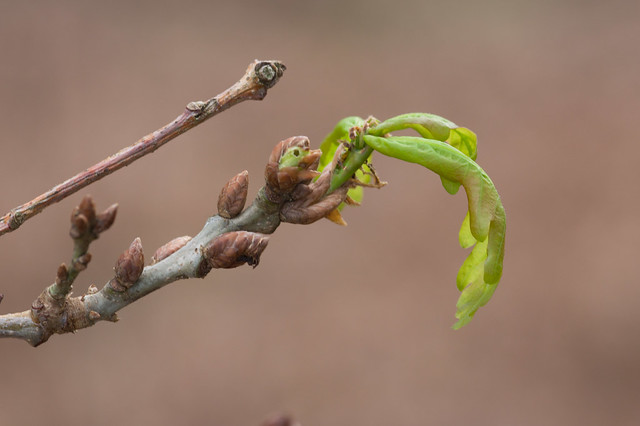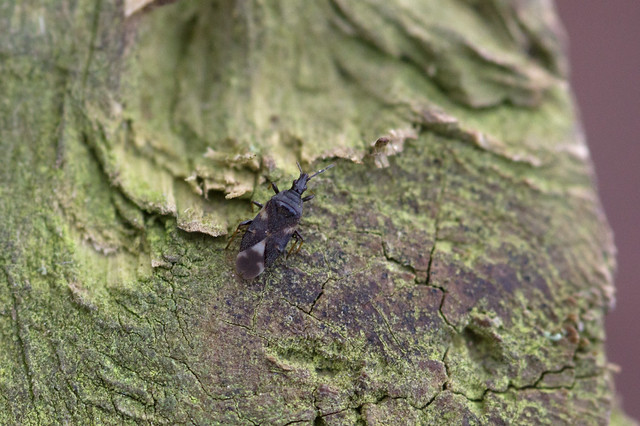
Despite the warmer weather, insects were still pretty thin on the ground, but I did see a couple of 7-spot ladybirds which had emerged from hibernation, and a few birch catkin bugs were out and about. While engaging in a spot of fence staring I noticed a small bug walking along, which I assumed at first to be one of the Anthocoris flower bugs, tiny predators of even smaller insects. After a while on BritishBugs trying and failing to work out which one it was, I gave up and called for assistance on twitter, and rapidly got an identification of Temnostethus pusillus, a close relative of the Anthocoris species and my second new Hemiptera of the year. I can't find much more information on it online, but the maps on the NBN gateway suggest it's a fairly widespread species.

The night before I brought the moth trap out of hibernation early to see what might be about in the mild temperatures. The answer was not a lot, but I did get my first moth of the year in the slightly unexpected shape of a Brindled Pug, which I haven't previously seen before April, but in this crazy winter I suspect it's going to be only the first of many early emergers.
For England I feel it's an unusually mild winter this year; many days are very cold but there's also a lot of sun which is normally very rare. I'm surprised that I've been seeing a lot of daffodils flourishing and little blossoms on the trees - it's so unusual here for that to be happening in January. It actually feels to me like a British March.
ReplyDeleteYes it's a crazily mild winter, lots of blossom on the trees already, and some little irises I planted in the autumn have already come up and flowered - I wasn't expecting to see them until March at the earliest!
ReplyDelete